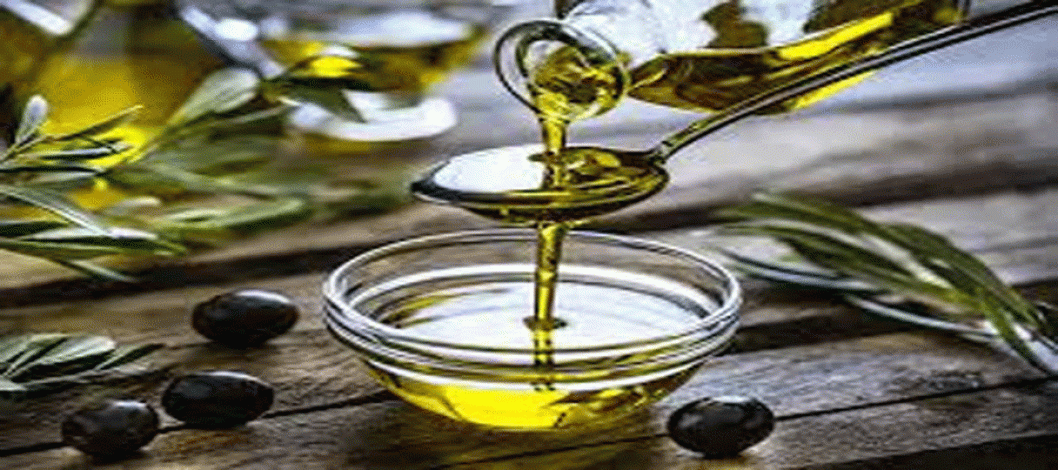
File Photo
Olive oil is a liquid fat obtained by pressing whole olives, the fruit of Olea europaea, a traditional tree crop of the Mediterranean Basin, and extracting the oil. It is commonly used in cooking for frying foods, as a condiment, or as a salad dressing. It can also be found in some cosmetics, pharmaceuticals, soaps, and fuels for traditional oil lamps. It also has additional uses in some religions. The olive is one of three core food plants in Mediterranean cuisine, together with wheat and grapes. Olive trees have been cultivated around the Mediterranean since the 8th millennium BC.
Spain is the world's largest producer, manufacturing almost half of the world's olive oil. Other large producers are Italy, Greece, Portugal, Tunisia, Turkey and Morocco. The composition of olive oil varies with the cultivar, altitude, time of harvest, and extraction process. It consists mainly of oleic acid (up to 83%), with smaller amounts of other fatty acids including linoleic acid (up to 21%) and palmitic acid (up to 20%). Extra virgin olive oil (EVOO) is required to have no more than 0.8% free acidity and is considered to have favorable flavor characteristics.
Olive oil has long been a common ingredient in Mediterranean cuisine, including ancient Greek and Roman cuisine. Wild olives originated in Asia Minor and were collected by Neolithic people as early as the 8th millennium BC. Besides food, olive oil has been used for religious rituals, and medicines, as a fuel in oil lamps, soap-making, and skincare applications. The Spartans and other Greeks used oil to rub themselves while exercising in the gymnasia.
It is not clear when and where olive trees were first domesticated. The modern olive tree may have originated in ancient Persia and Mesopotamia and spread to the Levant and later to North Africa, though some scholars argue for an Egyptian origin. The olive tree reached Greece, Carthage and Libya sometime in the 28th century BC, having been spread westward by the Phoenicians.[9] Until around 1500 BC, eastern coastal areas of the Mediterranean were most heavily cultivated. Evidence also suggests that olives were being grown in Crete as long ago as 2500 BC.
Archaeological evidence in Galilee shows that by 6000 BC, olives were being turned into olive oil, and in 4500 BC, at a now-submerged prehistoric settlement south of Haifa. Olive trees and oil production in the Eastern Mediterranean can be traced to archives of the ancient city-state Ebla (2600–2240 BC), which was located on the outskirts of Aleppo. Here, some dozen documents dated 2400 BC describe the lands of the king and the queen. These belonged to a library of clay tablets perfectly preserved by having been baked in the fire that destroyed the palace. A later source is the frequent mentions of oil in the Tanakh.
Dynastic Egyptians before 2000 BC imported olive oil from Crete, Syria, and Canaan, and oil was an important item of commerce and wealth. Remains of olive oil have been found in jugs over 4,000 years old in a tomb on the island of Naxos in the Aegean Sea. Sinuhe, the Egyptian exile who lived in northern Canaan c.1960 BC, wrote of abundant olive trees. The Minoans used olive oil in religious ceremonies. The oil became a principal product of the Minoan civilization, where it is thought to have represented wealth.
There are many olive cultivars, each with a particular flavor, texture, and shelf life that make them more or less suitable for different applications, such as direct human consumption of bread or salads, indirect consumption in domestic cooking or catering, or industrial uses such as animal feed or engineering applications. During the stages of maturity, olive fruit changes colour from green to violet, and then black. Olive oil taste characteristics depend on the stage of ripeness at which olive fruits are collected.
Olive oil is an important cooking oil in countries surrounding the Mediterranean, and it forms one of the three staple food plants of Mediterranean cuisine, the other two being wheat (as in pasta, bread, and couscous), and the grape, used as a dessert fruit and for wine. Extra virgin olive oil is mostly used raw as a condiment and as an ingredient in salad dressings. If uncompromised by heat, the flavor is stronger. It also can be used for sautéing.
Olive oil is produced by grinding olives and extracting the oil by mechanical or chemical means. Green olives usually produce more bitter oil, and overripe olives can produce oil with fermentation defects, so for good olive oil, care is taken to make sure the olives are perfectly ripe.
Source: Online/OFA
Comment Now